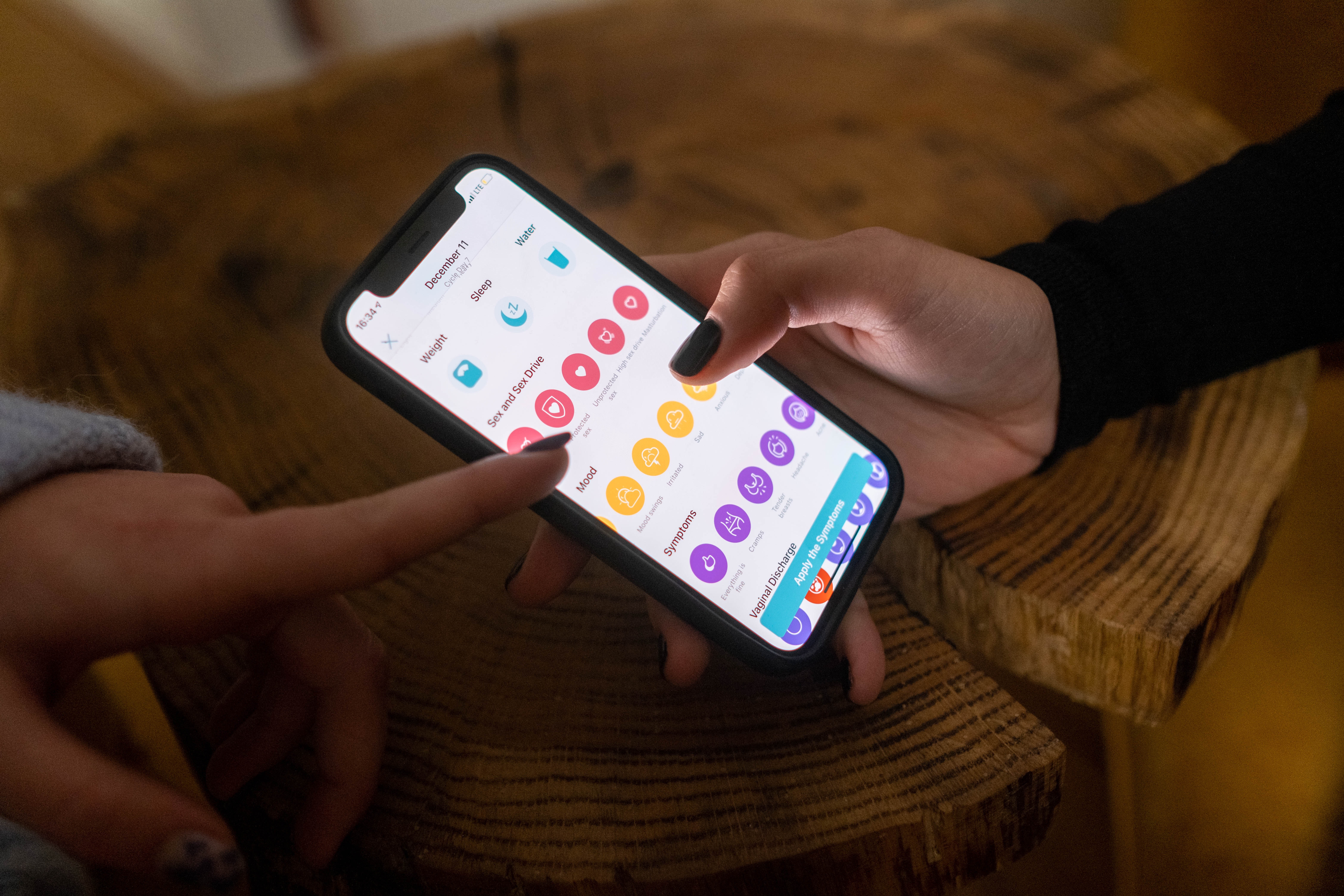This graduation opportunity is now closed!
Context
Technologies that measure or collect data about our bodies, feelings, and behaviours are increasingly present in our daily lives. One example of these are menstrual tracking technologies, mostly in the form of smartphone applications, or integrated into health platforms (i.e., Apple Health, Google Health, Fitbit, Garmin). Menstrual tracking technologies are widespread, with over 200 apps available for download, and have been adopted by a wide range of users, for example, the highly ranked apps Flo, and Clue have 40, and 12 million users, respectively. Menstrual tracking apps allow people who menstruate to remember the date of their next period, monitor and share their symptoms, and have informed conversations with their health care providers. For this, they collect (via self-reporting) a wide range of (potentially sensitive) data, including menstrual dates and cycle length, breast tenderness, fatigue, emotions, and dates and types of sexual intercourse, among others. However, the majority of these apps have limited functionalities, and tend to quantify a subjective and complex experience through objective and binary choices (e.g., pain: yes/no), leaving out crucial parts of the experience. Moreover, these apps have proven to be ineffective and inconvenient for those with irregular menstrual cycles, on hormonal birthcontrol, experiencing an abortion, and for those in different stages of their life (e.g., menarche, pregnancy, menopause).
Project
In this project you will embrace the fuzzy front end of the design process. By integrating quantitative data from menstrual tracking apps, collected through designerly data donation, with contextual insights from observations and interviews to explore the design space of near-future intimate technologies that empower and support women.
Student Profile
You are a curious student, critical of the role that technology plays in people’s daily lives and experiences. You are interested in designing with data and exploring how different data sources can be integrated to create deep insights at scale. You feel comfortable manipulating quantitative data, creating data visualizations and using methods such as participatory data analysis, observations, and interviews.
Outcome and Evaluation
You are expected to integrate qualitative and quantitative data to produce rich and meaningful contextual insights that can be transformed into design considerations informing the design space of near-future menstrual tracking technologies.
Literature to Get Started
- N. Campo Woytuk, M. L. J. Søndergaard, M. Ciolfi Felice, and M. Balaam, “Touching and Being in Touch with the Menstruating Body,” Conf. Hum. Factors Comput. Syst. - Proc., pp. 1–14, 2020, doi: 10.1145/3313831.3376471.
- S. Fox, N. Howell, R. Wong, and F. Spektor, “Vivewell: Speculating near-future menstrual tracking through current data practices,” DIS 2019 - Proc. 2019 ACM Des. Interact. Syst. Conf., pp. 541–552, 2019, doi: 10.1145/3322276.3323695.
- D. A. Epstein et al., “Examining menstrual tracking to inform the design of personal informatics tools,” in Conference on Human Factors in Computing Systems - Proceedings, May 2017, vol. 2017-May, pp. 6876–6888, doi: 10.1145/3025453.3025635.
- A. Skatova and J. Goulding, “Psychology of personal data donation,” PLoS One, vol. 14, no. 11, pp. 1–20, 2019, doi: 10.1371/journal.pone.0224240.
- B. Maus, D. Salvi, and C. M. Olsson, “Enhancing citizens’ trust in technologies for data donation in clinical research: Validation of a design prototype,” ACM Int. Conf. Proceeding Ser., 2020, doi: 10.1145/3423423.3423430.
What is Designerly Data Donation?
Designerly data donation is an approach for data collection in-the wild, where people are invited to contribute to research and design projects through their personal data and insights.
Contact
For more information and application, please get in touch with Alejandra Gomez Ortega.
